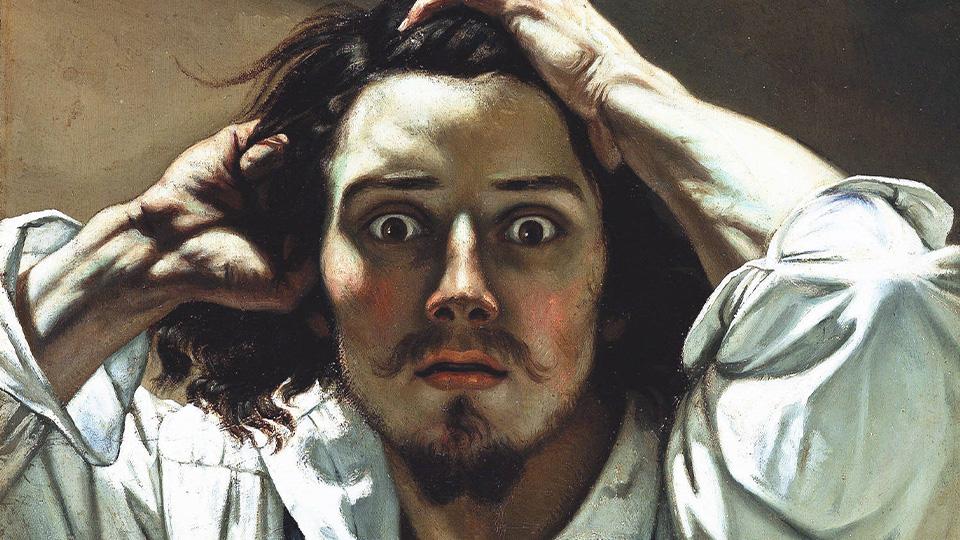‘Tortured artist’ myth? Research links wellbeing with creativity
Primary page content
The “tortured artist” is a long-standing stereotype, but is it a creative myth or reality? A new study by researchers at Goldsmiths has found a link between a positive emotional state, wellbeing and increased feelings of creativity.

The Desperate Man by Gustave Courbet
The research by Professor Joydeep Bhattacharya and Professor Alan Pickering from the Psychology Department at Goldsmiths and MSc student Kaile Smith was published in Creativity Research Journal.
The study looked at a sample of 290 creative professionals who engage in at least 20 hours of creative activities per week. Over a two-week period, participants provided daily responses on their creative behaviours and emotions.
The results were found to “contradict existing stereotypes of the tortured artist suffering for their art”.
Instead, the research found that those participating were increasingly creative in both their work and everyday lives when they felt a strong sense of wellbeing and positive emotions.
Study lead, Professor Bhattacharya said: "Our findings show that emotions and well-being are crucially linked to feeling creative in the daily lives of creative professionals. Creativity happens more on days filled with energy, excitement, enthusiasm and a clear sense of well-being.”
Kaile Smith, former MSc student at Goldsmiths explained the motivation behind the research: “It stems from this belief that seems to permeate our culture that creative people are inherently troubled. This includes references to Vincent van Gogh’s mania, Sylvia Plath’s depression, Ernest Hemingway’s alcoholism, the list goes on.
“Our research finds that creative individuals have a highly adaptive psychological profile: the most creative individuals are more open, more conscientious, and have higher emotional stability as well as greater overall wellbeing.”
Professor Bhattacharya added: “While the results suggest a strong correlation between creative behaviour and mental wellbeing, further research is needed to prove whether positive emotions ultimately lead to more creativity. However, it is also possible that wellbeing and creativity are mutually reinforcing.”
The Creative Life: A Daily Diary Study of Creativity, Affect, and Well-Being in Creative Individuals by Kalie Smith, Alan Pickering and Joydeep Bhattacharya was published in the Creativity Research Journal. Read the full article on Taylor & Francis Online